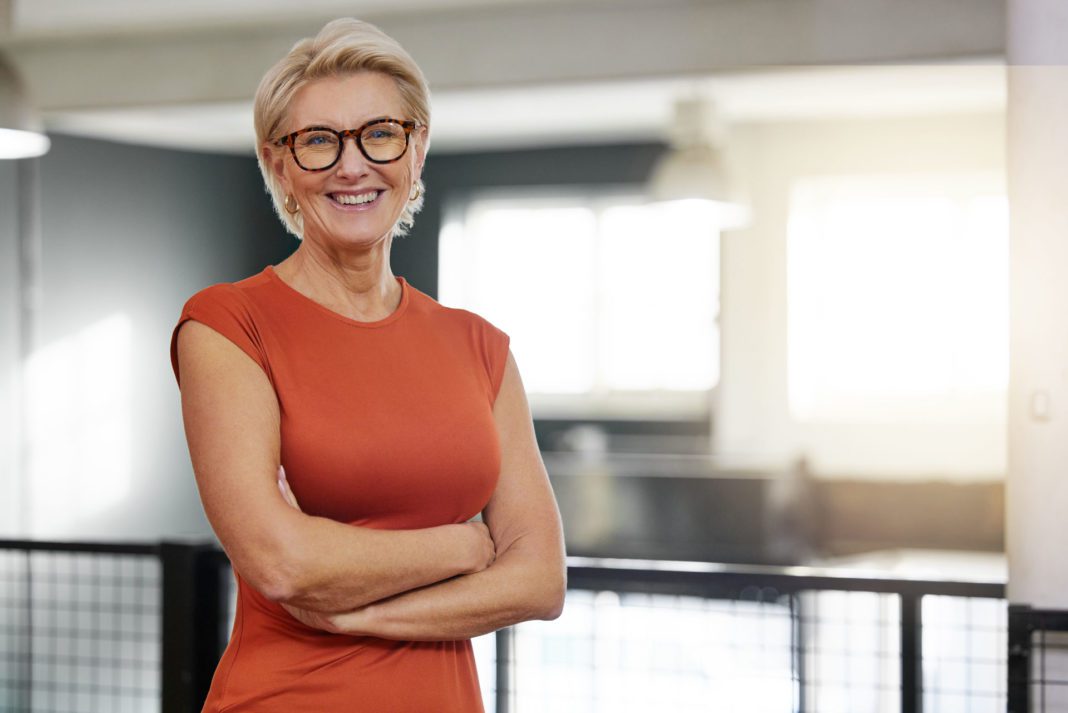Resources for Female Entrepreneurs
Melanie Anthony can offer plenty of reasons why women should launch their own businesses.
“A woman who goes into business for herself has the opportunity to earn more,” says Anthony, who is the senior director of marketing and development for the nonprofit REI Oklahoma – an economic development agency.
“A woman who owns her own business has more flexibility,” Anthony continues. “She can adapt her schedule.”
And female business owners are more likely to put time and money back into their communities, says Jennifer Edwards, manager of REI’s Women’s Business Center.
“They invest in keeping business local, especially with other women in business,” she says.
But entrepreneurship is seldom an easy path. The Women’s Business Center, established in 2002, addresses the particular challenges women face – including less access to capital as opposed to male business owners. There’s no membership fee at the WBC, and most workshops are free. Last year, 2,400 women were served.
When women come together for the workshops, Edwards says, “it’s a safe place to dig a little deeper and bounce ideas around.”
REI, based in Durant, provides services designed to stimulate economic growth in Oklahoma’s 77 counties.
Business consultant Audrey Hathorn has volunteered since 2015 with SCORE Oklahoma City, which offers educational services to entrepreneurs and small-business owners.
“Most of my mentees have questions about finances and about overhead – which is employees,” says Hathorn. “They want to know how to get employees to stay, and how to boost morale.”
SCORE’S Women’s Entrepreneur Resource Hub focuses on empowering women by offering mentorship, education and networking opportunities.
“Women, more than ever, are leading the charge,” says Hathorn. “We are being vocal about our careers and our development.”
Oklahoma women are starting their own businesses in areas including financial services, internet technology and real estate, says Hathorn. Bookkeeping, event planning and environmental services are also growth areas for women entrepreneurs, says Edwards.
“Service-based industries are where women are starting businesses,” says Edwards. “We are seeing a lot of professionals transition out of traditional workplaces and go into business for themselves.”
Edwards loves helping women with their business plans. Lenders like to see the business concept explained, and to see that potential business owners have put in the time to research their industries.
“It’s one of my favorite purposes behind writing a business plan – getting that passion laid out on paper,” she says. “It ensures that I get to know where they want to go with the business.”
Recruiting Female Leadership
Hathorn doesn’t mind admitting there were some scary moments when she left her corporate job to launch Amplifly, a business consulting firm. But she also knew she had done certain things right. She paid her dues by working more than 20 years in human resources. She knew that small businesses, especially, could benefit from her expertise, having worked with many as a volunteer for SCORE. And she started her business as a side gig in 2018 before taking it full-time in December 2022.
Women are under-represented at the executive level in some of Oklahoma’s most important industries, and casting aside self-doubt can be one key to moving forward, business leaders say. That applies to moving up the corporate career ladder, as well as striking out on one’s own to help other women break the glass ceiling, just as Hathorn is doing.
“Women, by our nature, are a little bit more risk-averse,” says Edwards. “We like having all our ducks in a row. We like to have the money in order, all the pieces in place, the business plan perfect. But things don’t have to be perfect. Sometimes you have to take that next step, to take that leap.”
When women aren’t present in management roles in industries such as energy, it makes it difficult for companies to attract a diverse workforce, according to the International Energy Agency, an intergovernmental organization that provides policy recommendations for the energy sector.
“If women are not advancing in the energy sector, there will be fewer role models and mentors to attract more women,” according to the IEA. “Furthermore, if women working in the energy sector are unable to advance in their careers, they will be motivated to change sectors.”
Saadia Zahidi, head of the World Economic Forum’s Center for the New Economy and Society, says industries with a poor track record of hiring and promoting women can acquire skills held by other companies that do better. Corporate training on unconscious gender bias is one example. Companies can also provide scholarships and mentoring for female STEM students.
“Businesses and governments need to take a much more customized approach to ensuring that the right talent is being developed for these industries,” says Zahidi.
Some Oklahoma companies have women’s groups, where female workers mentor one another and share ideas, says Hathorn.
“A lot of great things are said in those meetings,” she says, “but sometimes they are more aspirational. We need to get those ideas outside of those groups and make them policy.”
Not every woman wants to move into management, Hathorn says, “but they need to see that there is an opportunity for it, that there is room for development at that company.”
A Look at the Facts
In Oklahoma and across the business world, gender gaps in leadership persist. But some of the news is good as it pertains to female executive level representation; a recent analysis by Equilar, which provides corporate leadership data, determined that the growth of women in leadership roles accelerated to an average pace of 6.9% between 2016 and 2021. That’s up from a 3.8% growth rate in the prior five years. Women now hold about 14% of executive positions worldwide, up from 8% in 2010, according to a CNBC report.
But progress is not equal across industries, as in the energy sector, where women hold just 9% of executive officer roles.
That would suggest Oklahoma is short-changing itself, because firms with more women at the senior executive level outperform those with lower representation, according to Bank of America Global Research.
When an industry lags in gender diversity, it’s “damaging to economic growth, income equality and social inclusion,” says the IEA.
The outlook seems better for millennials, the IEA reports, with women in the 30-40 age group taking on leadership roles at a much higher rate than previous generations. That’s especially true for the natural gas utilities and renewable energy sectors.
Some countries also do better than others, with Russia, Australia and the United Kingdom reporting the highest representation of women in energy.
Women do dominate in representation and leadership roles in Oklahoma and elsewhere in industries such as education, healthcare, nutrition, the arts and social services. But the Spears School of Business at Oklahoma State University notes that those tend to be lower-paying occupations, and Oklahoma already has a gender earnings gap that’s about 5% higher than the national average.
If equal pay were a reality in Oklahoma, the Spears school reports, women’s earnings would increase by about $5.4 billion annually, and the poverty rate for working women would be reduced by nearly 50%.
One bright spot is that the percentage of women-owned businesses in Oklahoma grew by nearly 10 percent between 2015 and 2019, the Spears school reports.
Women-Owned Businesses
Women own a diverse set of businesses in Oklahoma. For those thinking of creating their own companies and are looking for inspiration, check out “women-owned certified businesses” on the Oklahoma Department of Commerce website – okcommerce.gov.
Women who obtain the certification make the selection process easier for companies and state agencies seeking diversity in their hiring of contractors, vendors and suppliers, according to the Commerce department website.
Listed in alphabetical order, the certified businesses range from A-1 Staffing and Recruiting, owned by Gale Parker of Oklahoma City, to Zyzer LLC, an asphalt contractor owned by Starla Wittrock of Kingfisher.
There’s also Carrell Trucking in Ardmore, owned by Brenda Carrell, and Rosie Lowe’s Micro Machine in Tulsa, which, since 1982, has machined small parts for the aerospace, geophysical, firearms and electrical industries.
Based in Edmond, Watkins-Conti Products is owned by Allison Conti and develops solutions for life-altering healthcare difficulties.
With a slogan of “Because Chatter Matters,” Chatter Marketing of Tulsa is owned by Heather Berryhill and specializes in advertising, marketing, branding and digital services. Clients there have included Merry Maids, Andy’s Frozen Custard, ONE Gas and the city of Sapulpa.
If your goal is to open a women-owned business in Oklahoma, resources exist to help you, and the sky’s the limit.


























